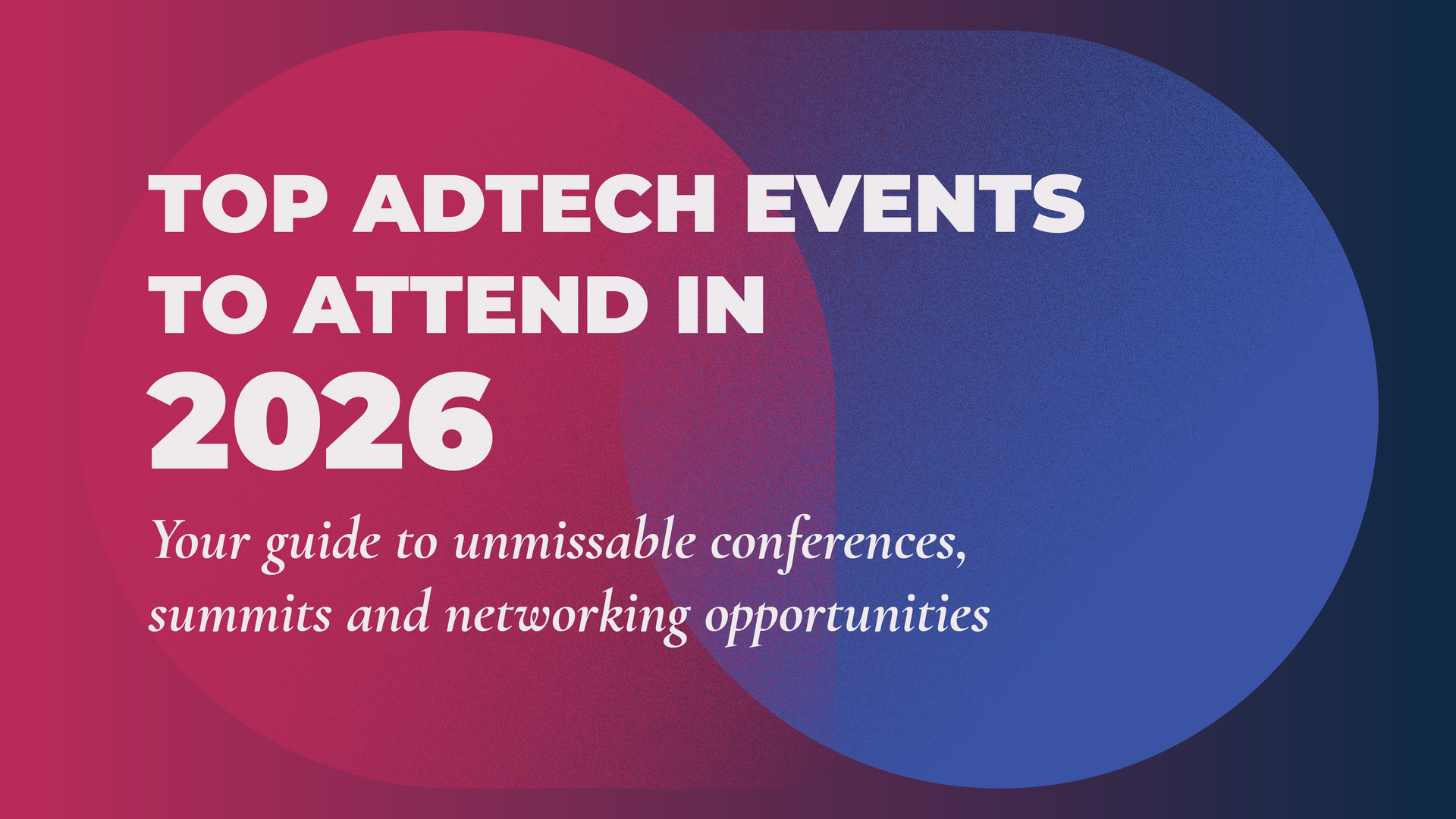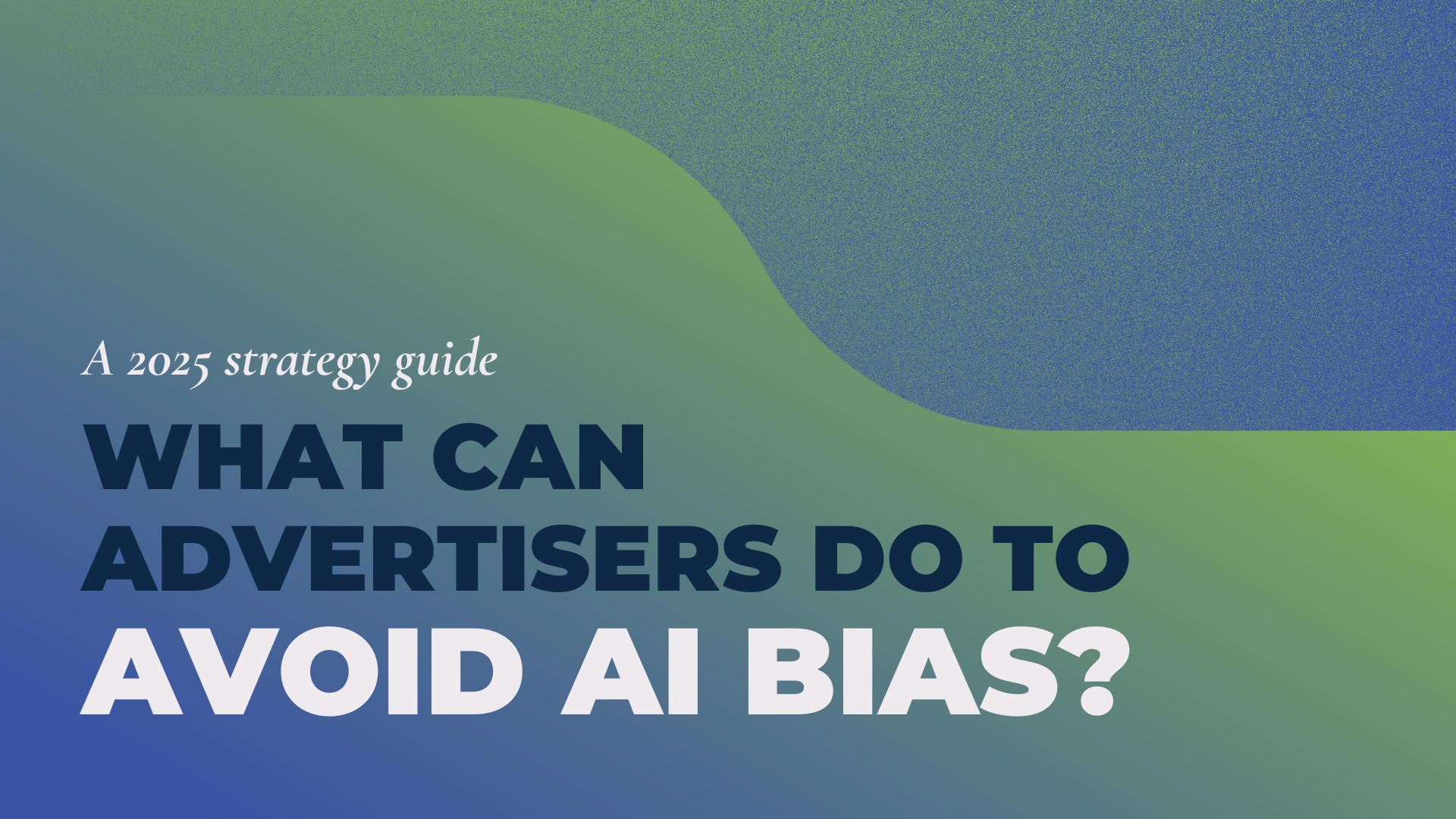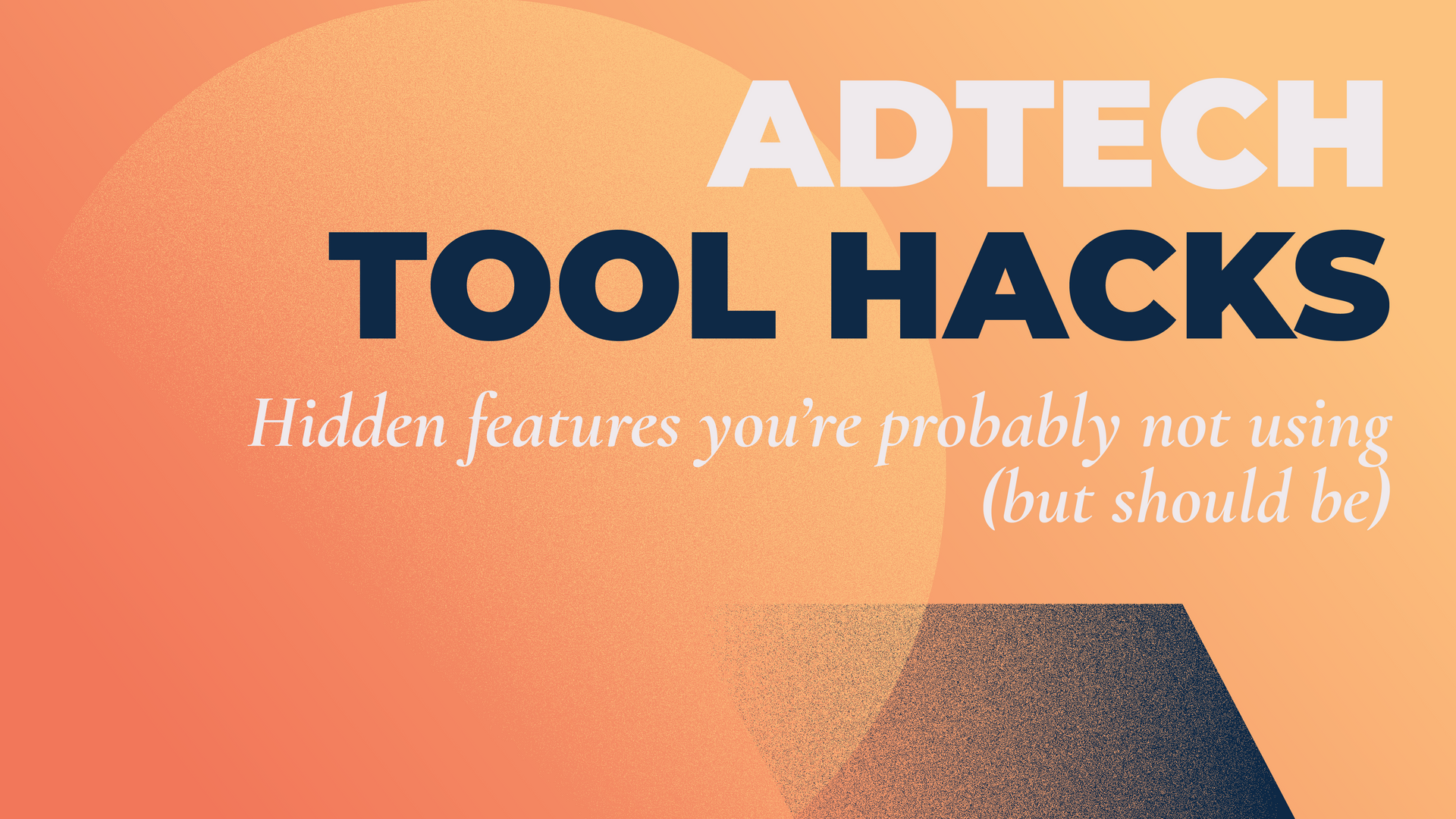ADTECH BASICS
Think you understand adtech? If the term brings to mind mysterious algorithms and adverts that seem to follow you around the web, you're missing most of the details.
At its core, adtech simply means the technology that powers digital advertising from the tools that buy and sell ad space in milliseconds, to the platforms that decide which ad you see and when.
It’s a vast, complex ecosystem that can feel overwhelming, full of acronyms and moving parts. We're here to break it down to the essentials: what it is, how it works, and why it matters to everyone, whether you're in the industry or not. This is our no-nonsense guide on adtech basics, jargon-free so you can make sense of adtech even if you've not got a techie bone in your body.
What is Adtech?
Adtech, or Advertising Technology, is the infrastructure of systems and software that makes digital marketing possible. It allows advertisers - the people creating and paying for the ad to be displayed - to connect with publishers - the platforms that sell ad space to advertisers, such as websites, blogs and apps.
This technology enables efficient buying and selling of ad space in the ecosystem of web, social, streaming platforms and beyond, including advertising out in the world. It assists with optimising costs, predicting and measuring outcomes, and targeting the right audiences.
Whilst primarily related to digital advertising, adtech is relevant to and used in all manner of advertising, including online advertising, influencer marketing, and out of home (OOH) advertising such as billboards and transport, particularly where digital screens are serving the ads.

Common tools and technology
The following areas make up the key tools in advertising technology across the ecosystem.
DSPs, or 'Demand-Side Platforms' allow advertisers, aka the 'demand side' or 'buy side', to automatically bid on digital ad space across multiple websites, apps and video platforms.
The DSPs do the legwork to get an advertisers ad placed in the best possible space. They target specific audiences, manage ad campaigns, and optimise bidding in real time (RTB), automatically adjusting how much an advertiser is willing to pay for an ad impression as the auction happens. This ensures the best ad performance and value, based on data.
SSPs, or 'Supply-Side Platforms' which allow publishers, aka the 'supply side', to sell their ad inventory: spaces where ads can be placed across digital platforms.
SSPs connect publishers with multiple DSPs, ad networks and ad exchanges in order to sell the advertising space they have available. They ensure they get the best possible price whilst managing who can advertise in the publisher's available ad space, which is crucial for avoiding fraudulent and harmful advertising.
Ad Networks are companies which connect advertisers with websites and apps where they can run their ads.
They are the middlemen between advertisers and publishers. They gather ad inventory from multiple publishers and package it, often based on audience segments, topics, or formats, before selling it to advertisers without real-time bidding auctions.
Ad Exchanges are digital marketplaces where publishers and advertisers can buy and sell their ad inventory.
They act as a trading floor for programmatic advertising (in simple terms, automated advertising), connecting SSPs with DSPs to run automated auctions for each available ad impression. Ad exchanges enable transparent bidding driven by data, assisting both sides to provide the most relevant inventory and maximise revenue.
Ad Servers are the technology responsible for storing, managing, and serving or displaying ads on a publisher's platform.
They deliver ads to a website, app or other digital platform, handling everything from deciding which ad to show, to tracking impressions and clicks, and collecting performance data. Ad servers ensure the right ad is displayed to the right audience at the right time. They are the backbone of both the buy and sell sides of digital advertising.
DMPs, or 'Data Management Platforms' are data warehouses used to collect, organise and store audience information from multiple sources such as websites, apps, CRM systems and third-party providers.
They segment this data into relevant audience groups and provide information that allows advertisers to reach them more accessibly. This enables advertisers to better target the right people at the right time. The insights from DMPs allow other adtech tools like DSPs to optimise the performance of an advert.
ATDs or 'Agency Trading Desks' are managed services within a larger advertising agency, frequently used on top of a DSP and other technologies in a company's adtech stack.
These services manage programmatic, bidding and audience buying for the agency on behalf of their clients. ATDs handle everything from bidding strategy to audience targeting and campaign optimisation. They are an agency's in-house programmatic assistant, leveraging expertise and tech to deliver better media buys (the purchase of ad space) for multiple clients.
What's next?
Now you have a grasp on the basics, there's a lot more to adtech than just the tools that bring it to life.
Adtech Glossary
If you have more buzzwords, acronyms and techie know-how you need to break down, you can check out our adtech glossary below – 150+ adtech terms explained in layman's terms!
Common Challenges
Like all industries, the adtech world has its hurdles, including ad fraud, viewability and brand safety. We explain the challenges and how the industry fights to keep advertising honest.
Privacy and Regulation
Data privacy is more than just a buzzword. Over the years, it continues to be responsible for changing how adtech works. We explain GDPR, cookie changes, and how your data is used.
Measuring Success
Clicks, impressions, conversions. What does it all mean? Learn about the key ad metrics and how advertisers measure their campaign success with simple attribution models.
Sustainability
The digital advertising industry, like every other, leaves a carbon footprint. From servers and supply chains to creative files and vendor networks, adtech is having a very real impact on climate change.
The Future of Adtech
From AI to Connected TV and retail media, adtech is always evolving fast. Get a quick look at the trends that have been shaping the future of digital advertising across the past few years.
Additional Reading
"Adtech: A Short History"
A brief look at the history of adtech, from advertising's ancient origins to the innovations of the modern day.
"A Newcomer's Guide to Multichannel Advertising"
Our nuts-and-bolts channel guide for those starting out in the business, complete with conversation starters to get you networking!
"What is an Adtech Stack, and How Should You Go About Building One?"
What is the elusive entity that houses the acronyms, platforms and solutions that enable brands, advertisers and publishers to engage in advanced digital advertising?
"A Short History of AI: Could AI be Brilliant?"
It is sobering to consider that the concept of artificial intelligence is actually older than rock & roll. But unlike rock & roll, AI’s peak years unmistakably lie ahead.
The Refill
Get a content top-up!









